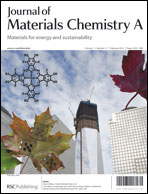Light-weight solid foams are utilized in applications such as packaging and insulation mainly due to their intrinsically high porosity, low relative density and associated mechanical and transport properties. Here hollow core spherical shells are prepared with walls made of a polyhedral silica nanofoam with open cells. A microemulsion film at the oil–water interface of oil droplets is used as a soft structural template for the condensation of soluble silica species. The microemulsion sets the length scale of the monodisperse silica nanofoam cells, and the emulsion droplets set the micron-scale dimensions of the polydisperse spherical shells. Porosity is achieved by removing the templates and oils, leaving pure low-density silica. This results in a hierarchically structured, highly porous shell foam material that packs into beds with a measured porosity of approximately 97.3%, well into the range of silica aerogels. Using a combination of electron microscopy, small-angle synchrotron X-ray diffraction and nitrogen physisorption, an accurate structural model for the nanofoam shells is constructed. The material is shown to be comprised of open-cell foams that are structurally analogous to dry polyhedral soap froths having minimal surface partitions, and Plateau boundaries. The primary polyhedral nanofoam cells are 30 nm in diameter connected by 7 nm cylindrical windows. These nanofoams form spherical monolithic shells with volume average mean diameter of 41 microns and shell thickness of 0.7 microns. Simple models for the thermal conductivity of these nanofoam shell materials are constructed that include accounting for the nanoscale effects on gaseous and solid thermal conductivity. These are compared to the measured value of 0.041 W m−1 K−1. These materials represent new structures in the family of self-assembled, highly porous silica materials and are potentially useful in packaging and insulation and other applications due to their light weight and/or intrinsically low thermal conductivity and associated mechanical and transport properties.

You have access to this article
 Please wait while we load your content...
Something went wrong. Try again?
Please wait while we load your content...
Something went wrong. Try again?


 Please wait while we load your content...
Please wait while we load your content...